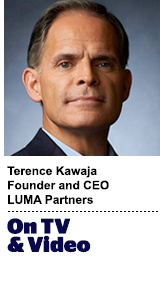
“On TV And Video” is a column exploring opportunities and challenges in advanced TV and video.
Today’s column is written by Terence Kawaja, founder and CEO at LUMA Partners.
Allbirds. Warby Parker. Brandless. Peloton. Dollar Shave Club.
Over the past several years, an explosion of relatively young startups has garnered significant market share from major brands, some of which had built up their brand equity over decades.
These direct-to-consumer brands – alternatively referred to as D2C or DTC – have done just what the name implies: cut out the middle man to go directly to the consumer. This phenomenon is well beyond a fad – DTC success has been demonstrated in a variety of verticals and the number of new brands has topped 400, according to our LUMAscape of direct-to-consumer brands.
These brands have grown up on digital, leveraging advanced marketing technology to own the customer relationship and utilizing first-party data to understand and target the consumer effectively. The marketing spend is primarily performance-oriented, with a focus on customer acquisition. They’ve also taken a fresh approach to product design, customer service and content marketing.
DTC brands are approaching an inflection point where it’s necessary to move outside of the digital channel to maintain the growth that has made these brands successful thus far. Coupled with increased media costs on Facebook and Instagram, and it becomes an imperative for DTC brands to find additional marketing channels to extend reach and remain cost-effective.
Alternative channels for DTC brands include out-of-home advertising to increase brand awareness and reach, as well as forward integration into physical retail to provide an additional touchpoint for new and returning customers.
But the one channel that is garnering the most attention is television. This could prove to be the biggest opportunity for the continued expansion of DTC brands.
DTC shift to TV
While only 73% of the population has broadband penetration, 96% of the US population has access to TV, which offers a huge opportunity for new customer acquisition.
The major incumbent brands being threatened by DTC brands today used television to scale quickly and increase brand awareness, but they weren’t as concerned with spending only to drive business outcomes. DTC brands have only ever known spending on advertising to drive results, but traditional linear TV doesn’t offer the same performance-oriented metrics as digital. This is where convergent television can help.
Convergent TV allows the digital attributes of targeting, personalization, attribution and performance to be applied to television’s sight, sound and motion format, audience and spend scale, premium inventory and brand safety. As convergent TV continues to gain momentum as an advertising channel, DTC brands will capitalize on the capabilities and can fuel continued growth in the sector.
OTT is DTC’s nirvana
While convergent TV offers a huge opportunity for DTC brands to continue to scale, the biggest opportunity lies in over-the-top (OTT) television.
Think about the cohort of millennials that is prone to buy DTC brands. Now think about the cohort of millennials who subscribe to OTT television. They are virtually the same demographic!
This alignment offers a great opportunity to connect with existing customers over a new channel while also reaching a new audience to continue to expand its customer base.
What’s next?
It is clear that to continue to grow, DTC brands need to leverage TV, but the barriers for entry have historically been too high. The convergent-TV opportunity is not lost on some companies that are investing in supporting the unique needs of DTC brands.
NBCUniversal, AT&T’s Xandr and Simulmedia have launched initiatives to allow DTC brands to access TV inventory and apply their digital marketing techniques to television advertising. Going forward, we expect a symbiotic relationship between DTC brands and convergent-TV enablers, which will drive adoption and growth for both.
Follow Terence Kawaja (@tkawaja), LUMA Partners (@LUMA_partners) and AdExchanger (@adexchanger) on Twitter.
This post was syndicated from Ad Exchanger.


More Stories
Rockit Global: The NZ Marketing Awards allows us to share our story
David Yurman Names PHD Global Media Agency of Record
Streaming Platforms Must Become Performance Channels To Stay On Wall Street’s Good Side